Today I am very pleased to present photography of Kinga Owczennikow. And as before this short piece, an introduction to her work, will initiate a series of this week’s posts: first an interview, then an opportunity to showcase one project and finally a selection of one photo picked from the images published during the whole week, which will be later printed on a t-shirt.
Kinga Owczennikow, born in Poland is a photographer who explores the city in all its aspects, all over the blue planet. She calls herself a world citizen and it seems she truly is one of these wandering spirits in pressing need of constant movement. Her nomadic life style took her to all sorts of different places such as Japan, India, Burma and Vietnam.
Currently she is living and working in Hong Kong. All these varied locations keep inspiring and fueling her photography, through which her lust for life is almost palpable. She is equally comfortable working in juicy full colour as well as in somber black and white, matching the techniques used to the expression of the particular image. To me it feels like she is one of those silent, sharp observers, equally at home in whatever surrounding she finds herself.
People are rather missing from her photography, if they appear they are little add-ons, she mostly concentrates on exploring urban landscape and its elements. She describes the process herself: “At the highest preference, I wander places with no one but my camera, without preconceived notions, in order to find my photographs within the given space, time and set of emotions.” The work that is the outcome of this process is a record, an inner journal of her (sub)conscious mind reflected on the fragments of urban scenes she explores.
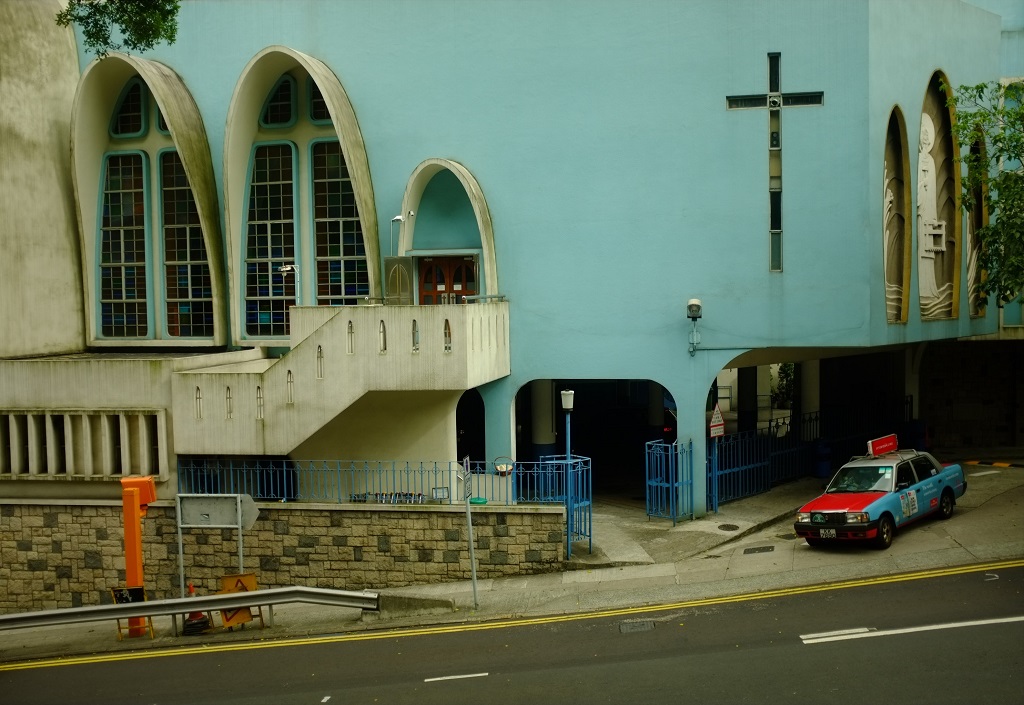
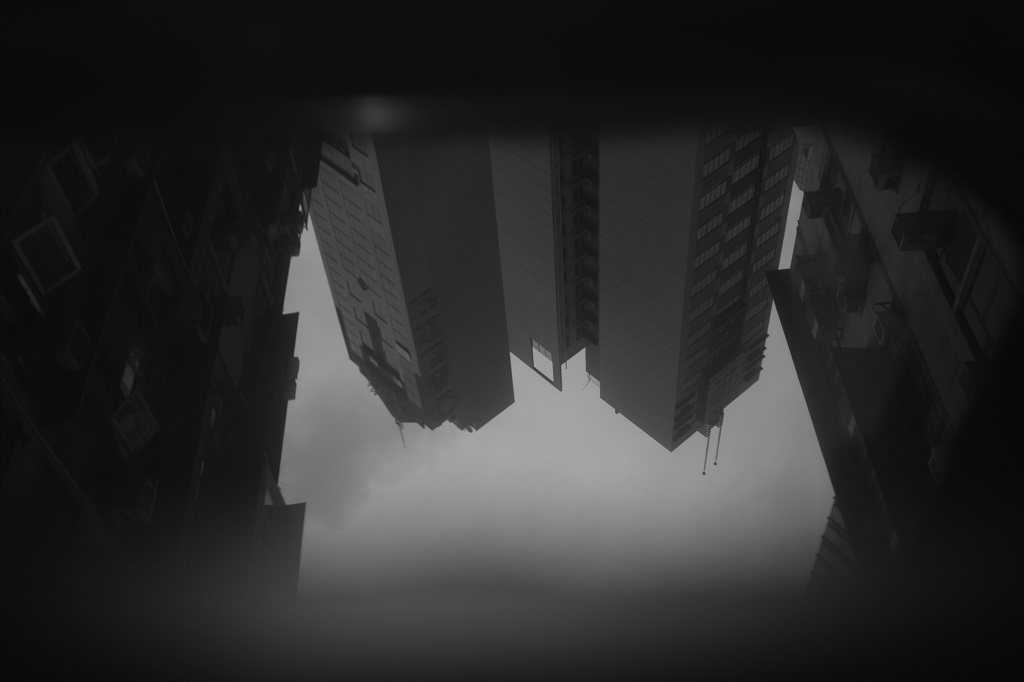
What I admire about her is the ability to retain consistency and integrity while constantly flowing from one place and culture to another. Some people can have difficulty and turn to the clichés of travel photography while faced with cultures different then their own, and even some great masters were guilty of weaker work done away from their usual territory. That is not the case with Kinga, and one can’t help but admire that type of strength of spirit.
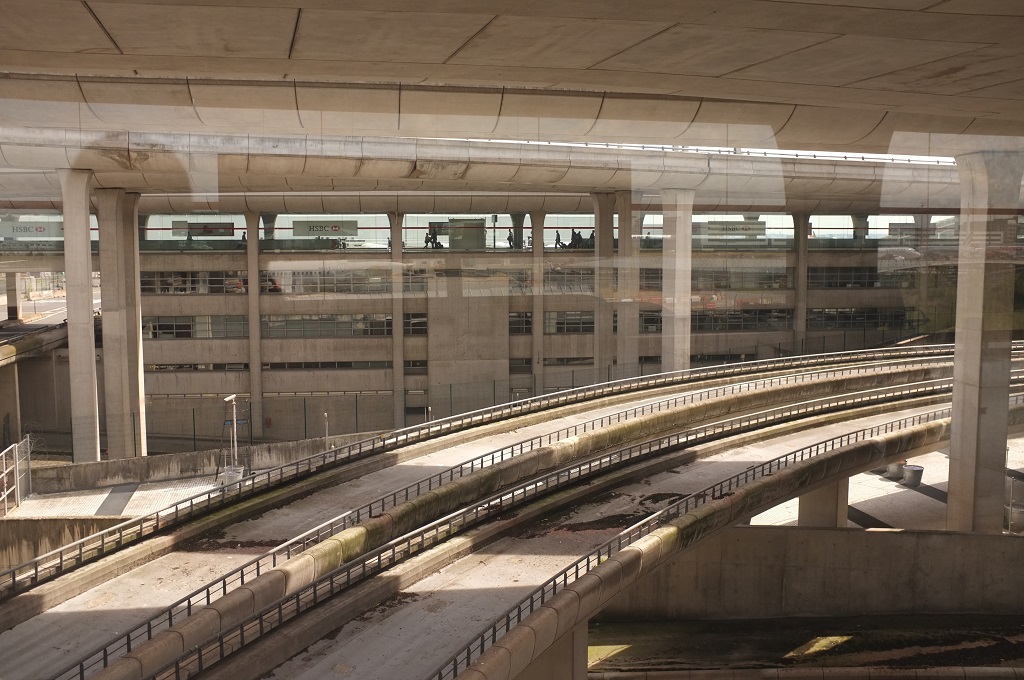
The image above for me is a perfect symbol of her travelling spirit and her photography style – complicated, multi-layered, full of potential possibilities and interpretations. The detail of actual travelers in far background is a very sweet and quite playful element, making this rather cold masculine construct into something rather different.
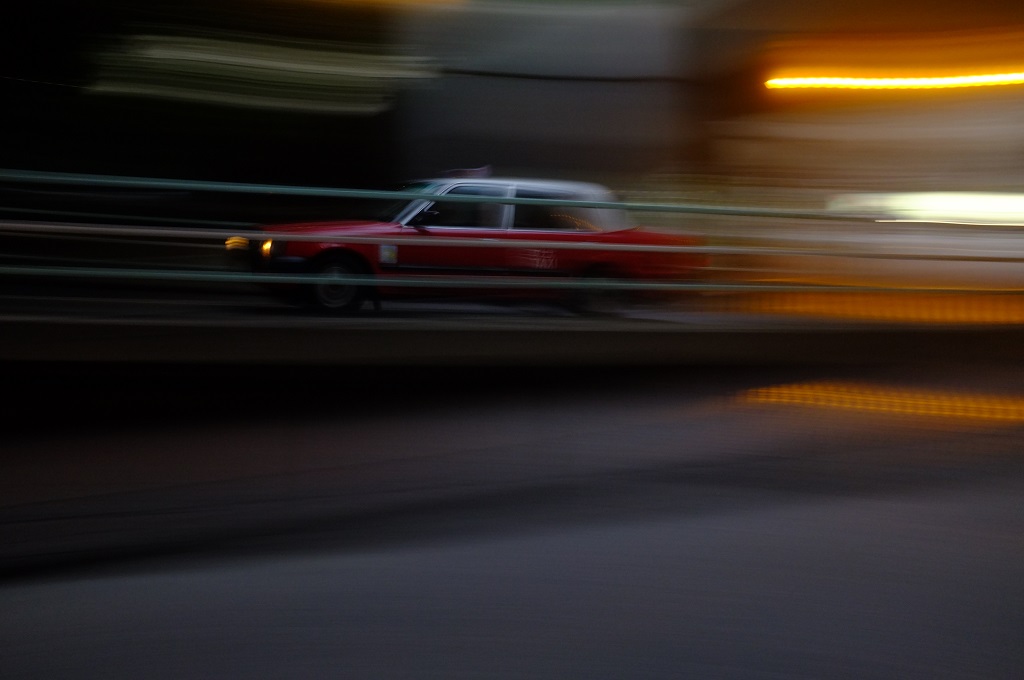
Kinga obviously feeds herself on the great energy of the contemporary metropolis – the taxi going at full speed, a red blur trailing lights is at once filled with power and hunger for even more experience. The fact it is a taxi, not just a car, is obviously stressing the impermanence of our stay in the current place, the drive to move on, to swallow as much as we possibly can, while barely having the time to digest it all. The megalopolis experience indeed.
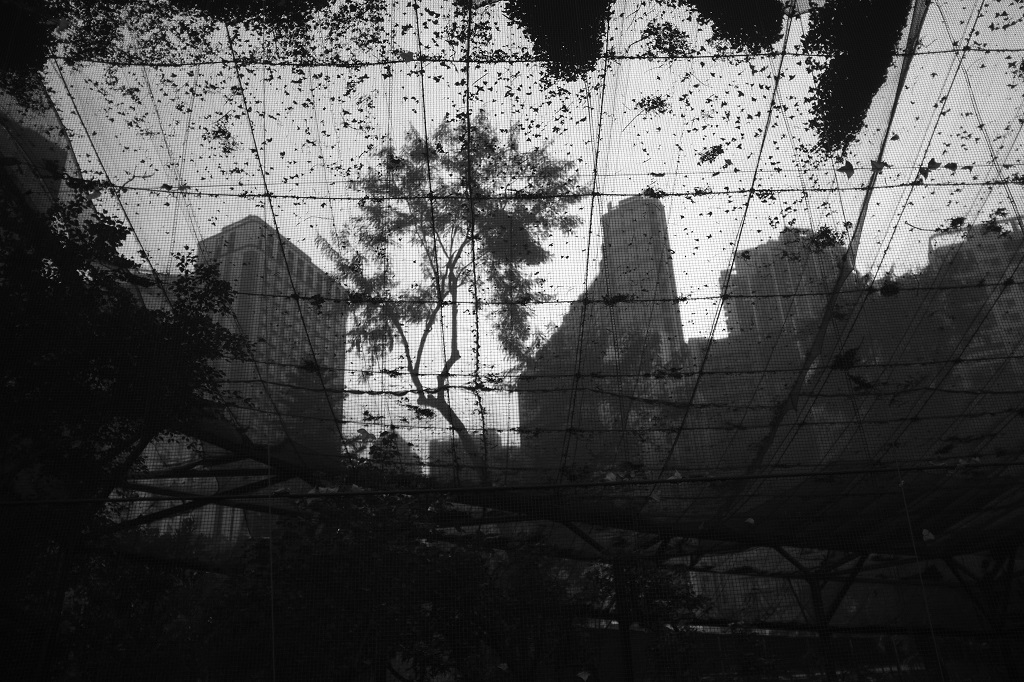
On the other hand, she is sometimes filled with a very visibly overwhelmed sensitivity, like in this dark image of looking at a distant cityscape through a heavy mesh, a barrier that allows to see but will not let you pass. Is this the other side of megalopolis existence? Alienation, loneliness and anonymity create sometimes a cocktail that is difficult to swallow. The gathered leafs framing the view are there like the days past, a device enabling one to experience the present moment.
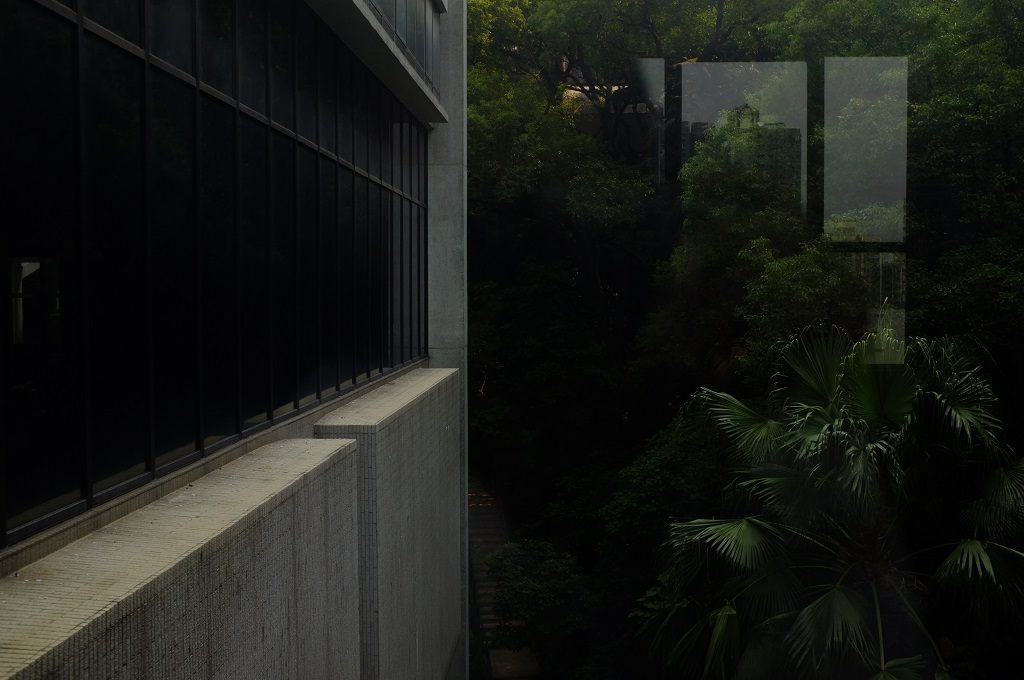
This is the force of the other, silent and meditative stream running through Kinga’s work – the silent spaces, seemingly timeless and devoid of movement, the other side of the spectrum when compared to the speeding cab. The perfection of human invention with it’s straight lines and familiar concrete contrasted with the dark, pulsating foliage outside, on which another image is projected, creates a mental triangle, where the awareness of the artist struggles to go deep into the unconsciousness, and the outcome is uncertain. It’s a path with no definite answers, and the image does not try to force any conclusions on the viewer. The conversation takes place, but we can’t hear what is being said.
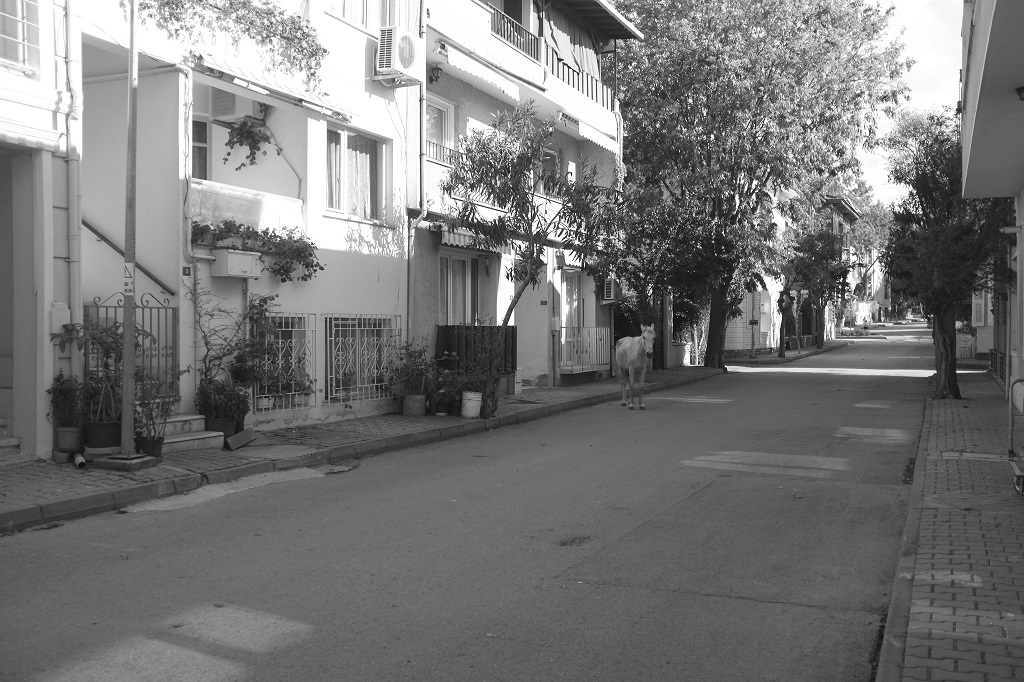
The slightly panoramic view of this sunlit street requires a moment of study, the discovery of the white horse is one of those gentle ‘aha’ moments, where a small fragment of the unexpected changes the whole picture into something else, challenging our preconceptions. A fresh look is the reward for your efforts.
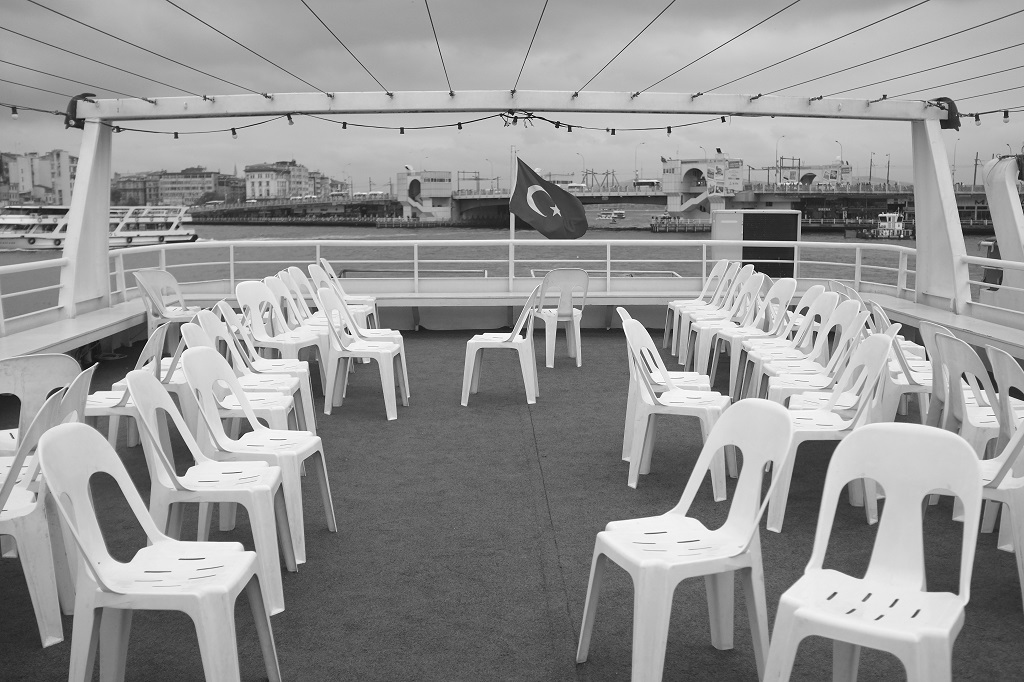
Kinga moves freely from grand views of the city to silent details. Personally I found this shot of the white plastic chairs on the deck of the cruise ship (do I need to stress the constant movement in space again?) fascinatingly absorbing. Chairs seem to be a reoccurring motive in Kinga’s photography. It is a well known symbol of human, his presence and absence at the same time. And this is amazing how much life you can embed in empty chairs. The arrangement of empty forms sets one imagination on fire, the photograph is filled with voices, gestures and faces of the absent crowd in a haunting way, you can’t help but study who was facing who, were there some fractions within the two opposing groups? After a moment though, one is drawn even deeper – the two halves of the deck, facing each other, in a strange balanced imbalance are again a beautifully natural representation of the internal divide, uncertainty, doubt and quiet anxiety. This can be my favourite image of the lot, so subtle and yet so complex, it brings to my mind the best work of Walker Evans, and that is not easy.
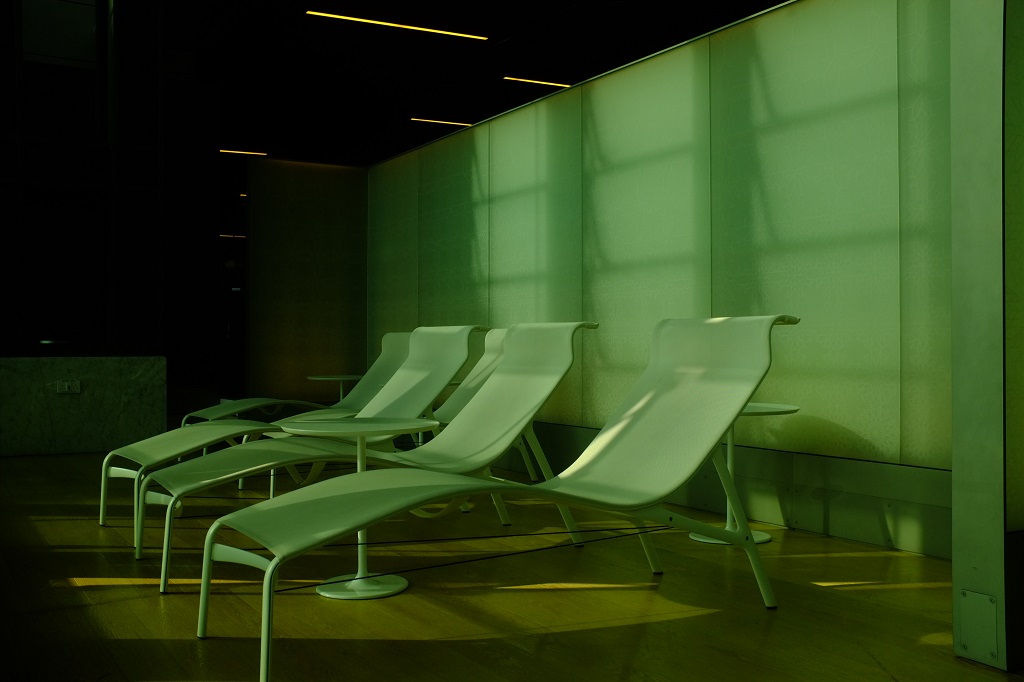
Contrast this other shot of chairs, luxurious designer comfy things, so perfect in their form and yet in a way very scary in their different kind of emptiness, a sad uniformity devoid of human warmth.
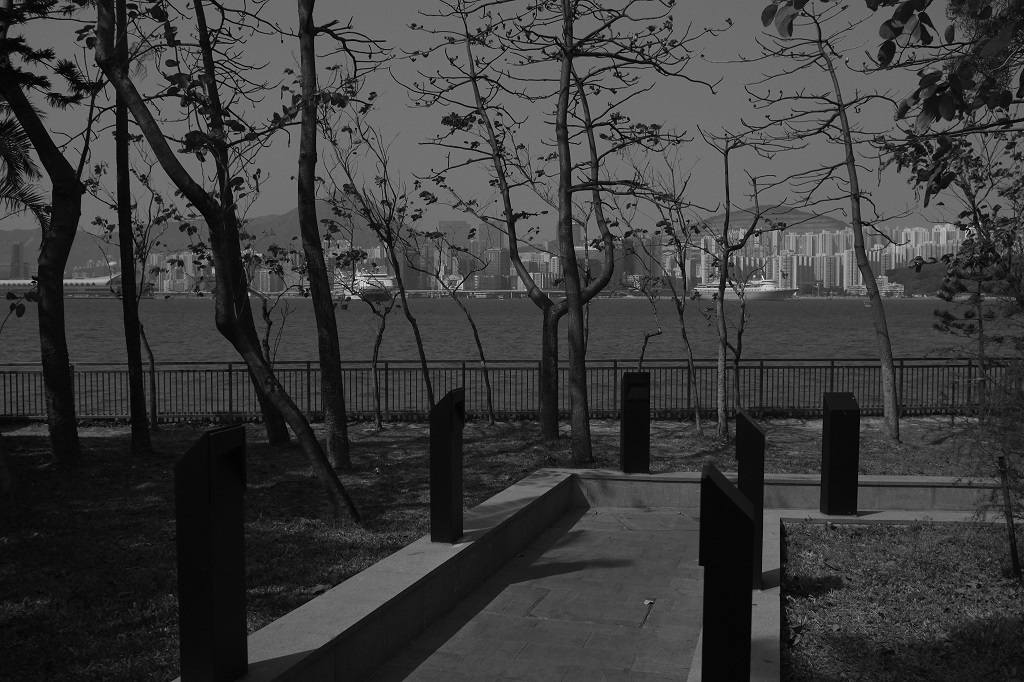
When I talked about Walker Evans, I also meant this image, a seemingly simple static composition, which again grabs you and forces you to sit and think. Looking at the black forms, in a weird way resembling a cemetery (is the river called Styx then?), naked trees and far away cityscape, I can’t help feeling alienated again, homesick and suddenly full of autumn cold sunlight, wondering how I got to the far away place I am now living in. The graceful use of monochrome is asking for some Satie as the background music.
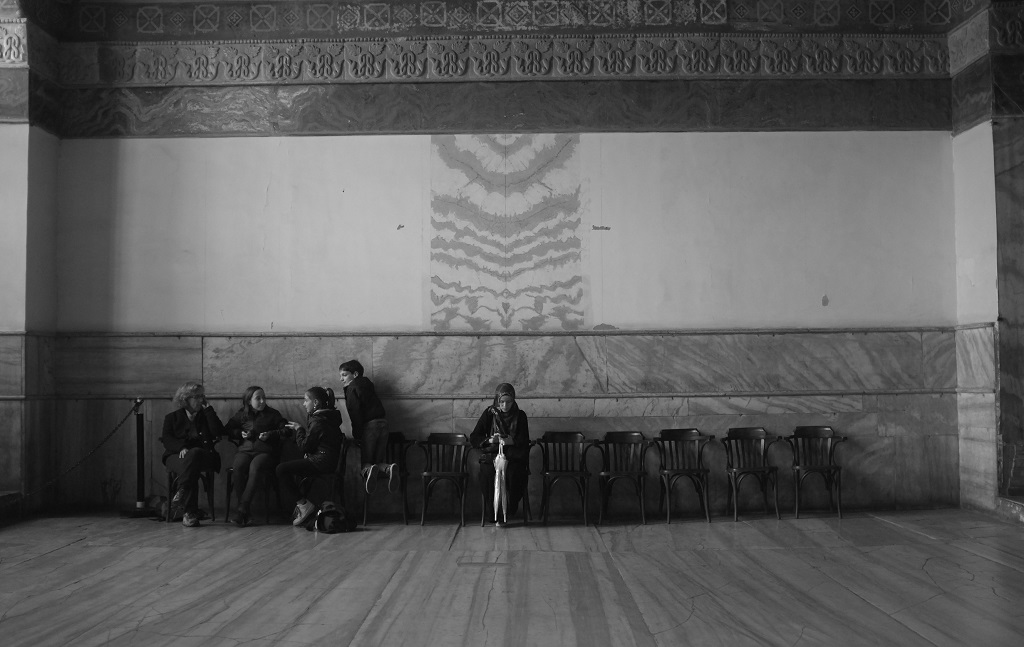
This scene continues the homesick theme. There is something universally familiar in the pose of the woman in the center, the fact of her sitting directly underneath the main graphical, symmetrical form on the wall, the messy group on the left only underlines the centrality of this gentle mother-figure, their cheerful conversation so different to the body language of the lowered head wrapped in a shawl, anchored by the double white slash of the two umbrellas, and a single shoe dead on center. This image brings to mind religious art, maybe a modern day Caravaggio, with a bit more distanced emptiness put in. The feeling of standing before an altar is strangely persistent in the background
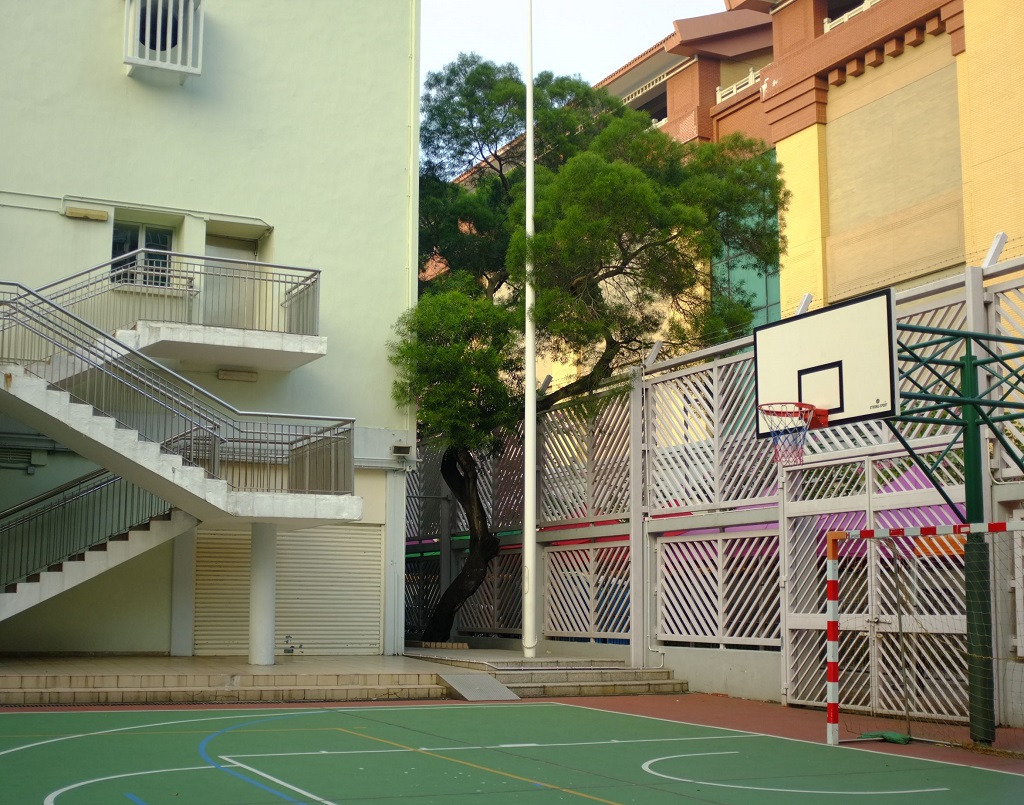
Her work is of course varied, and after the monochrome melancholy we get this – a strong tree, slotted between urban structures, but happily growing in all possible direction, even thriving in this supposedly alien territory. Is that a self portrait of a forever-traveller sucking the life force straight from the ground, whatever the geographical label happens to be? Maybe.
I hope you enjoyed Kinga’s work as much as I did.
If you enjoyed reading this post stay with us for more of Kinga Owczennikow’s photography. Also you might want to check her website to find out more about her work.
Share this Post
Recent Posts











